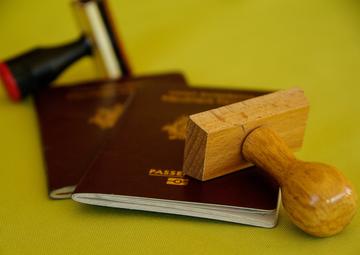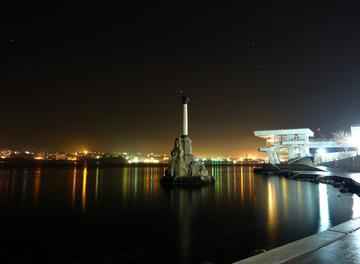Turning Ukrainians into Russians, Romanians into Hungarians and Italians into Austrians: The Spread of Passportization across Europe
Thomas Brewis, UC Fellow - University of Oxford
Introduction
In April and May 2019, the issue of citizenship in the former Soviet Bloc was brought into perspective by two contrasting events. Firstly, President Putin announced that Russia was to offer citizenship to the residents of the Russian-backed breakaway regions in Eastern Ukraine (BBC 2019). This would further increase the power of the Russian state in the region and moves these territories a step closer to de-facto annexation. Only a few days later Lithuania held a referendum which would allow its citizens to hold dual citizenship with 43 other countries with the notable exception being its neighbour Russia (Tidey 2019).
These two events continue to show that weaponised citizenship remains a part of Russia’s foreign policy repertoire. At the same time states around Russia which are concerned about Russian revanchism continue to view Russians within their territory as a potential threat to their sovereignty and therefore, seek to securitise Russian minorities as way of reducing their political power. This has created a vicious cycle of ‘passportization’ on the part of the Russian state followed by securitisation on the part of governments that feel threatened. This cycle works to the mutual benefit of governments who are able to use the fallout of this process to pursue their attempts at creating or strengthening a cohesive national identity; a modern attempt to turn ‘Peasants into Frenchmen’ (Weber 1976). While for a long time this cycle was confined to Europe’s Eastern periphery a resurgent European radical right has sought to adopt Russia’s tactics in order to strengthen their nationalist agenda. This threatens to undermine the sovereignty of EU nation states as well as inflaming smouldering ethnic tensions.

The spread of Passportization across Europe
During the late USSR the Soviet government sought to pre-emptively diffuse independentism by pursuing a policy of Russification; encouraging and sometimes forcing large groups of ethnic Russians to move from Russia to the other Soviet republics. The Soviet government considered Russian citizens to be more loyal and ideologically indoctrinated than other ethnic groups and, it was hoped that their presence would be enough to diffuse nationalist sentiment. This meant that after the collapse of the USSR between 12-15 million ethnic Russian found themselves in new countries, some of which had never existed before (Melvin 1995). While Russians in the Baltic had a complex and sometimes difficult relationship with the various pro-independence National Fronts and the first governments of the Baltic countries this did not result in armed conflict. On the other hand, Russians in Moldova and pro-Russian minorities in Georgia took up arms to resist what they saw as the dominance of new nationalistic elites by carving out small ethnic enclaves for themselves now known as Transnistria, South Ossetia and Abkhazia (Jones 2013; Yekelchyk 2007). The Russian government has supported these internationally unrecognised territories with money and military support and has sought to prolong these ‘frozen conflicts’ as it essentially allows Russia to limit the possibility of NATO or EU integration for these countries and, allows the Russian government to wield significant levels of influence in its neighbouring countries (Macfarlane 2008; Devyatkov 2012).
Citizenship was traditionally defined as either being derived from European civic values such as place of birth and education or, from Asian ethnic values such as religion or ethnic heritage (Kohn 1944). While this simplistic division between East and West has been strongly contested (Bjorklund 2006) Russia, fittingly for a country that straddles Europe and Asia, has defined its citizenship and Russianness as having both a civic aspect and an ethnic aspect often referred to as the difference between российский and русский (Laruelle 2009). The existence of a large diaspora has a large impact on Russian identity and the Russian government has attempted to acknowledge both the ethnic and civic aspects of Russian identity at different times. This has led to the accusation that the government has adopted a set of ‘purposefully ambiguous’ policies designed more to benefit the popularity of the current government rather than the welfare of the diaspora (Shevel 2010; 2011 p179). One of the ways this would be done would be to issue Russian passports to residents of disputed territories making them Russian citizens. This was often done in a secretive manner often using embassies, the Russian military and informal networks to distribute often incomplete or invalid passports which would essentially make people Russian citizens but, prevent people from traveling outside their home territory. While this was first done in Transnistria international attention was drawn to this project of ‘Passportization’ during the 2008 War in Georgia when Russia argued that its reason for intervention in the war was primarily to protect Russian citizens who had been ‘passportized’ after the 2003 Rose revolution (Grigas 2016). This led to several countries in the region such as Latvia and Lithuania which had always been suspicious of Russian influence to view their sizable Russian population as being vulnerable to this sort of clandestine activity (Artman 2013) and to begin or expand upon exclusive integration policies designed to cut off ethnic Russians from Russia (Patsiurko & Wallace 2014) and deny them the right to dual citizenship. Furthermore, the EU’s Eaststrat Com task force and its anti-disinformation campaign is heavily targeted at Russian speaking citizens of EU countries with its own Russian language section, clearly viewing Russian speakers as being highly vulnerable to Russian propaganda (EEAS 2018)

The Russian annexation of Crimea in 2014 did little to change this fear. Unlike the 2008 war with Georgia Russia formally annexed territory where its minorities were present marking a shift from ambiguity to outright intervention. However, the decision to only to go as far as to launch a proxy war in Eastern Ukraine by backing rebels in Donetsk and Lugansk showed that some ambiguity as to the Russian government’s official stance on reclaiming its minorities remains.
The annexation of Crimea helped to redefine Russian foreign policy. Furthermore, the event also suggested a new definition for which groups can expect the protection of the Russian state, as Putin claimed in a speech celebrating the annexation of Crimea that there multiple categories in terms of ethnicity, language and political leanings which Russia recognises as justification for annexation or some form of protection. ‘The total population of the Crimean Peninsula today is 2.2 million people, of whom almost 1.5 million are Russians, 350,000 are Ukrainians who predominantly consider Russian their native language, and about 290,000–300,000 are Crimean Tatars, who, as the referendum has shown, also lean towards Russia (Putin 2014).’ Geostrategic and political concerns still matter, of course, it seems unlikely that Putin’s decision to officially ‘passsportise’ Eastern Ukraine only a few days after Ukrainian President’s Zelensky’s inauguration is a coincidence.
Before the invasion, the Russian government had often flirted with the idea of a greater civilizational identity and national mission. One strand of this thought, pan-Slavism argued that Russia shares an unbreakable cultural bond and Orthodox faith with other Slavs most notably Ukrainians, Belarussians, Serbians and Bulgarians. Russia’s view of a Slavic brotherhood seems to be based not on the reclaiming the Russian Empire’s status as a protector of the Slavs but on Huntington’s idea of a that the Slavic world constituted its own ‘civilization’ a set of cultural and religious practices that guide their political culture (Huntington 1993). In the aftermath of the protests following Putin’s controversial re-election in 2012 the Russian government doubled down on this civilizational narrative and has attempted to juxtapose the civilization of the Orthodox East with the moral decadence and decay of the West. However, as the cold reception Patriarch Kiril and Putin received on their visit to Kiev in 2013 showed the Russian’s were much keener on this Occidentalist narrative than their ‘Slavic brothers’ (Zygar 2016). The other strand of this greater identity is that of pan-Eurasianism which, is more geo-strategic and argues that due to Russia’s size and influence Russia has a duty to lead the countries within its sphere into a more multi-polar world (Biersack & Lear 2014). However, again this strand is heavily informed by historical determinism. In 2014 Putin argued that the Russian centred Eurasian Economic Union was different from other trade blocs around the world because it ‘took ages, rather than years or decades to create’ (Putin 2014).
The invasion of Crimea however, destroyed this idea of pan-Slavic identity and seriously damaged Russian plans for pan-Eurasian union but, by doing so the invasion created a much narrower and more exclusionary view of Russian identity and citizenship. The Russian government argued that Ukrainians were now the enemy as their entire society had been overrun by fascists stirring up memories of the Great Patriotic War and justifying Russia’s annexation of Crimea and the killing of (until recently) fraternal Ukrainians (Laruelle 2016). This simplistic use of Perelman’s concept of ‘pre-agreement’ (Perelman 1979) was however, effective and the annexation of Crimea was treated as an act of restorative justice and national reclamation. The event created a powerful ‘rally around the flag effect’ with Putin’s polling level rising from 61% to 83% over a single month similarly to how Medvedev public opinion polling rose during the 2008 Georgian war (Levada 2019).

Conclusion
Russia’s policy towards its diaspora in Ukraine created an enormous ‘rally around the flag’ effect for the Russian government. It is therefore unsurprising that several governments across Europe have, if not copied then certainly observed and learned from Russia’s tactics of using their minorities abroad for domestic or foreign policy gains. While Russia’s policies towards its minorities have clearly undermined norms around national sovereignty and the post-Cold War border settlement, these policies are also revisionist in that they seek to assert new values based on revanchism or ethnic definition of citizenship (Allison 2017). The failure of the international community to stop Russia and the death of liberalism in Eastern and Central Europe has encouraged re-assertive nationalist elites to undermine norms and values for domestic political gain (Krastev 2007; 2017). Therefore, it is unsurprising that the most egregious examples of this after 2008 have come from two of the most pro-Putin and revisionist EU governments. This suggests that while these countries are not directly copying Russia there is a level of mimetic learning among leaders of the pro-Kremlin extreme right about how to weaponize citizenship and the advantages this can bring. In Hungary prime minister Orban has taken advantage of nationalist fervour as well as Hungary’s large diaspora in Romania and Ukraine which, Hungary lost after the collapse of the Austro-Hungarian empire to undermine neighbouring countries and consolidate his illiberal democracy. The issue of Hungarian minorities has been prescient within the country since 1991 (Evans & Whitefield 1995) and various Hungarian governments have attempted to ‘use’ these minorities either for domestic reasons or to influence the governments of neighbouring countries. However, the policies enacted by Orban go much further than those of previous governments.
The main focus of the Hungarian policy, as with Russia’s, seems to be the development of a more ethnically focused national identity and a civilizational narrative but, unlike Russia, Orban has another incentive to distribute passports to the diaspora - votes. Between 2010 and 2018 over one million Hungarians, mainly in Romania, Serbia and Ukraine were given Hungarian citizenship. The reasons for doing so are clear, not only does giving passports strengthen the link between a diaspora and the government but also creates a voter base loyal directly to the party that gave them the right to vote (Pogonyi 2018, pp.975–980). As evidence of this, in the 2018 Hungarian parliamentary elections that Orban won by a landslide, 96% of votes from Hungarian minorities in Romania went to Orban’s party Fidez (HFP 2018). Orban’s system of illiberal democracy and everyday nationalism relies on Hungary remaining effectively a one-party state (Goode & Stroup 2015) and diaspora votes not only allow him to quazi-realise his ambitions of an ethnically united nation but also ensure that his party remains dominant. This shows that the passportization used by the Hungarian government while similar in means but not in results. Orban’s pragmatic nature, he has at different times supported and opposed Russia’s revanchist foreign policy (Kalan 2016) also suggests that there is little real cooperation between governments and that while Russia opened the floodgates on this issue each county is going about the process of passportization in a different way.
The coalition government in Austria has also attempted to use citizenship to bring nationalism on the agenda by allowing descendants of Austrians in South Tyrol to apply for Austrian citizenship. This, as with Hungary was territory that the country lost after WW1. While it is unclear how many Tyrolians will take up the Austrian government’s offer this policy is the brainchild of the extreme-Right Austrian Freedom Party (the now disgraced junior partner in the coalition government) which, like many radical right parties signed an agreement of cooperation with Russia in 2016. The main goal of the policy seems to be a symbolic, an attempt to shift domestic perceptions of citizenship towards a more ethnic definition of Austrian citizenship, much to the chagrin of the radical-right coalition in Italy (Bell 2018).
The actions of these countries threaten to destabilase the post-Cold War border settlement in Europe. Indeed, if any of the former Yugoslav countries attempted to use various forms of passportization it could lead to intercommunal violence. Russia’s plan to weaponize citizenship in Georgia and Ukraine has had far-reaching consequences, many of which were likely unknown to the bureaucrats and officials who initiated the first rounds of passportization in the mid 2000’s. Most importantly it showed that there was little that young or weak states can do to stop passportization besides securitising their Russian inhabitants. Furthermore, the use of passportization is spreading, the success of the Putin system in terms of longevity, effectiveness of repression and the high popularity of Putin has been a model that radical right leaders such as Hungary’s Orban or Italy’s Salvini have explicitly said that they aspire to in one way or another (Braghiroli & Makarychev 2016). A key part of this system is the redefinition of citizenship along more ethnic lines and, one of the most visible ways of doing this is to blur the lines between domestic citizen and diaspora. This does not mean that the aims of this passportization is always the same. Russia has linked the giving of passports to a revanchist foreign policy and a mission of national reclamation. For Orban however, passportisation seems focused on securing the votes needed to maintain his illiberal democracy. Finally, the Austrian attempt to ‘passportise’ South Tyrol seems to have been mainly symbolic and is unlikely to continue now that the Austrian Freedom Party are out of government (due to their own Russian related scandal). This shows that although Russia was the first to show to show the vulnerability of the international system to this kind of activity, other revisionist leaders have made the tool their own.
International law around the concept of passportization is unclear and contradictory (Littlefield 2009) and while it may be impossible to change Russia’s stance on the issue, within the EU it should be possible to create a cohesive framework that can prevent this kind of dangerous behaviour. This is essential as disputed territorial claims, competing nationalist agendas and the idea that minorities can form a treacherous 5th column within a sovereign state can form a toxic concoction.
Bibliography:
Allison, R., 2017. Russia and the post-2014 international legal order: revisionism and realpolitik. International Affairs, 93(3), pp.519–543. Available at: https://academic.oup.com/ia/article-lookup/doi/10.1093/ia/iix061.
Artman, V.M., 2013. Documenting Territory: Passportisation, Territory, and Exception in Abkhazia and South Ossetia. Geopolitics, 18(3), pp.682–704. Available at: http://www.tandfonline.com/doi/abs/10.1080/14650045.2013.769963.
BBC, 2019. Russia offers passports to people in eastern Ukraine territories - BBC News. BBC. Available at: https://www.bbc.co.uk/news/world-europe-48045055 [Accessed May 28, 2019].
Bethany Bell, 2018. Austria-Italy passport row tests Europe’s populist allies - BBC News. BBC. Available at: https://www.bbc.co.uk/news/world-europe-45888287 [Accessed May 27, 2019].
Biersack, J. & Lear, S.O., 2014. The geopolitics of Russia’s annexation of Crimea: narratives, identity, silences, and energy. Eurasian Geography and Economics, 55(3), pp.247–269. Available at: http://dx.doi.org/10.1080/15387216.2014.985241.
Bjorklund, F., 2006. The East European ’ethnic nation’- Myth or reality? European Journal of Political Research, 45(1), pp.93–121. Available at: http://doi.wiley.com/10.1111/j.1475-6765.2005.00292.x [Accessed August 21, 2019].
Braghiroli, S. & Makarychev, A., 2016. Russia and its supporters in Europe: trans-ideology à la carte? Journal of Southeast European and Black Sea, 16(2), pp.213–233. Available at: http://dx.doi.org/10.1080/14683857.2016.1156343.
Devyatkov, A., 2012. Russian Policy Toward Transnistria. Problems of Post-Communism, 59(3), pp.53–62.
EEAS, 2018. Questions and Answers about the East StratCom Task Force - European External Action Service. Available at: https://eeas.europa.eu/headquarters/headquarters-Homepage/2116/questions... [Accessed August 22, 2019].
Evans, G. & Whitefield, S., Social and Ideological Cleavage Formation in Post-Communist Hungary. Europe-Asia Studies, 47, pp.1177–1204. Available at: https://www.jstor.org/stable/152592 [Accessed July 4, 2019].
Goode, J.P. & Stroup, D.R., 2015. Everyday Nationalism: Constructivism for the Masses*. Social Science Quarterly, 96(3), pp.717–739.
Grigas, A., 2016. How Soft Power Works: Russian Passportization and Compatriot Policies Paved Way for Crimean Annexation and War in Donbas. Atlantic Council. Available at: http://www.atlanticcouncil.org/component/content/article?id=28801:how-so... [Accessed May 8, 2017].
HFP, 2018. Hungary to extend EP voting rights to diaspora and politicians may legally buy votes. Hungarian Free Press. Available at: https://hungarianfreepress.com/2018/10/21/hungary-to-extend-ep-voting-ri... [Accessed May 28, 2019].
Huntington, S., 1993. Clash of Civilizations. Cambridge, MA: John M. Olin Institute for Strategic Studies.
Jones, S.F., 2013. Georgia: a political history since independence, I.B. Tauris.
Kalan, D., 2016. Hungary in the grip of a bear hug | European Council on Foreign Relations. European council on Foreign Relations. Available at: https://www.ecfr.eu/article/commentary_hungary_in_the_grip_of_a_bear_hug... [Accessed August 21, 2019].
Kohn, H., 1944. The idea of Nationalism a study in its origins and Background, New York: Macmillian.
Krastev, I., 2017. After Europe, Philidelphia: University of Pennsylvania Press.
Krastev, I., 2007. The Strange Death of the Liberal Consensus. Journal of Democracy, 18(4), pp.56–63.
Laruelle, M., 2009. In the Name of the Nation, New York: Palgrave Macmillan US. Available at: http://link.springer.com/10.1057/9780230101234 [Accessed May 26, 2017].
Laruelle, M., 2016. The three colors of Novorossiya, or the Russian nationalist mythmaking of the Ukrainian crisis. Post-Soviet Affairs, 32(1), pp.55–74. Available at: http://dx.doi.org/10.1080/1060586X.2015.1023004.
Littlefield, S., 2009. Citizenship, Identity and Foreign Policy: The Contradictions and Consequences of Russia’s Passport Distribution in the Separatist Regions of Georgia. Europe-Asia Studies, 61(8), pp.1461–1482. Available at: http://dx.doi.org/10.1080/09668130903134848.
Macfarlane, S.N., 2008. Frozen Conflicts in the Former Soviet Union – The Case of Georgia/South Ossetia. OSCE Yearbook. Available at: http://ifsh.de/file-CORE/documents/yearbook/english/08/MacFarlane-en.pdf [Accessed May 18, 2017].
Melvin, N., 1995. Russian Beyond Russia, London: The Royal Institute of International Affairs.
Patsiurko, N. & Wallace, C., 2014. Citizenship, Europe and ethnic boundary making among Russian minorities in Latvia and Lithuania. MIGRATION LETTERS.
Perelman, C., 1979. La Nouvelle rhétorique = the new rhetoric: essais en hommage à Chaïm Perelman, Wetteren, Belgique: Universa.
Pogonyi, S., 2018. The passport as means of identity management: making and unmaking ethnic boundaries through citizenship. Journal of Ethnic and Migration Studies, 45(6), pp.975–993.
Putin, V., 2014. Speech at the meeting of the Customs Union Heads of State with President of Ukraine and European Union representatives • President of Russia. Available at: http://en.kremlin.ru/events/president/transcripts/46494 [Accessed May 7, 2017].
Shevel, O., 2011. Russian Nation-building from Yel’tsin to Medvedev: Ethnic, Civic or Purposefully Ambiguous? Europe-Asia Studies, 63(2), pp.179–202.
Shevel, O., 2010. The Post-Communist Diaspora Laws: Beyond the “Good Civic versus Bad Ethnic” Nationalism Dichotomy. East European Politics & Societies, 24(1), pp.159–187.
Tidey, A., 2019. Lithuanians back dual citizenship with 43 countries but not Russia | Euronews. Euronews. Available at: https://www.euronews.com/2019/05/13/lithuanians-back-dual-citizenship-wi... [Accessed May 28, 2019].
Weber, E., 1976. Peasants into Frenchmen: the modernization of rural France, 1870-1914, Stanford University Press. Available at: http://www.sup.org/books/title/?id=3200 [Accessed October 17, 2017].
Yekelchyk, S., 2007. Ukraine: birth of a modern nation, Oxford University Press.
Zygar, M., 2016. All the Kremlin’s Men, New York: Public Affairs.



